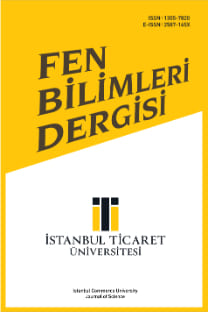Temiz Odaların Tasarımı Considerations on Clean Room Designs
Temiz odalar imalatın yapıldığı kontrollü çevreyi sağlamaktadır. Yarı iletken ve tümleşik devre imalatı gibi endüstrilerde temiz odalara gerek bulunmaktadır. Havada uçan kirletici parçacıkların kaynağı insanlar, süreç, kullanılan alet ve makinelerdir. Bu parçacıkların sürekli olarak havadan uzaklaştırılması gerekmektedir. Temiz oda tasarımları imalat için uygun ortamların oluşturulmasını, yatırım ve işletme masraflarının kabul edilebilir düzeyde tutulmasını amaçlamaktadır. Bu çalışmada temiz odalar incelenmektedir
Anahtar Kelimeler:
Temiz odalar
Temiz Odaların Tasarımı Considerations on Clean Room Designs
Keywords:
-,
___
- Basham, D., Wright, J.W, Fergusan, K.I ve Moy, G.W.( 2004), Design: Clean rooms, UFC 4-310-02N, MIL-HDBK-1028/SA.
- Bilhaut, L. ve L. Duraffourg (2009), Assesment of nanosystems for space applications. Acta Astronautica, in press, corrected proof.
- Coffey, D.E., (2002), High efficiency particulate air (HEPA) fitler generation, characterization and disposal experiences at the Oak Ridge National Laboratory. WM202 Conference. Feb. 24-28.
- Clean Room and Work Station Requirements (2007), Controlled Environments.
- Fleddermann, C.B. ve Bradshaw, M.D. (Çev.E. Akın), (2003), Elektrik ve Bilgisayar Mühendisliğine Giriş, Nobel Yayın, Ankara.
- Foulke, E. G., (2007), Safeguarding equipment and Protecting Employees from Amputations. OSHA (Occupational Safety and Health Administration), Small Business Safety and Health Management Series.
- Geng, H., (2005), Semiconductor Manufacturing Handbook, Chapter 38, Pavlotsky, R. V. ve Beck, S.C., Cleanroom Design and Costruction. McGraw-Hill Book, New York.
- Gommel, U. (2009), Maximizing benefits of clean manufacturing and technical cleaning advancements in automotive production. CleanRooms Europe.
- Groover, M. P., (2007), Fundamentals of Modern Manufacturing. John Wiley and Sons, Inc., New York.
- Honbori, I., Katu , Y. ve Kisakibaru, T. (1994), Development of highly efficient fan filter system for clean rooms. International Symposium on Semiconductor Manufacturing.
- Hu, S.C. ve Chuah, Y.K., (2003) Power consumption of semiconductor fabs in Taiwan. Energy (28) 895-907.
- ISO, (2005), Standards for classification of clean rooms.
- Kalpakjian, S. and Schmid,S. R., (2001), Manufacturing Engineering and Technology. 4th ed. Prentice-Hall.
- Lowel, C. ve C. Blumstein, D. (1999), Sartor: Industrial Energy Efficiency, Clean Rooms and Laboratories for high Technology industries. California Energy Comission.
- McFadden, R., (2008), A basic introduction to clean rooms. Coastwide Laboratories. Peterson, W.D., (2008), The Creation of Interoperable Integrated Circuits using clean room design practice. Silicore Corporation Plymouth.
- Rousseau, A. (2004), The Scottish Society for Contamination Control.
- Whyte, W., (2002), Cleanroom Design, John Wiley and Sons Inc., New York.
- Egecell Fan Filtre birimleri (2009), HEPA/ULPA filtreler. Ege Nisan Ltd. Yenişehir, İzmir. www.egenisan.com.
- İkinci el temiz oda ekipmanı.www.bidservice.com.
- ToolBox.com., Clean Rooms-ISO standard 14644. The Engineering ToolBox. www.Engineering.
- Wynnenvironmental (2008), www.wynenv.com.
- ISSN: 1305-7820
- Yayın Aralığı: Yılda 2 Sayı
- Başlangıç: 2002
- Yayıncı: Doç. Dr. Necip Şimşek
